 This paper presents the description of two new sites in Majes, Peru, both featuring an example of a skeleton-like petroglyph that may spiritually be linked with the Sacred Mountain of Coropuna. The documentation of those two new sites thus reveals new information about the symbolic spatial organization and ritual functions of the “Death Valley of the Andes”. It is especially hypothesized here that the specific setting of those two new sites may indicate a physical “Road to Coropuna”.
This paper presents the description of two new sites in Majes, Peru, both featuring an example of a skeleton-like petroglyph that may spiritually be linked with the Sacred Mountain of Coropuna. The documentation of those two new sites thus reveals new information about the symbolic spatial organization and ritual functions of the “Death Valley of the Andes”. It is especially hypothesized here that the specific setting of those two new sites may indicate a physical “Road to Coropuna”.
By Maarten van Hoek
*
*
New “Carcancha” Petroglyphs in Arequipa, Peru
Illustrating the “Road to Coropuna”
Maarten van Hoek – rockart @ home. nl
In 1951, Alberto Fuentes Llaguno and – somewhat later – Eloy Linares Málaga reported the discovery of a large collection of petroglyphs at Toro Muerto in the Majes Valley, Arequipa, Peru. One of the many petroglyphs at this site depicts a skeleton-like anthropomorph. Since then several similar images have been recorded in Arequipa rock art. This study presents the description of two new sites in Majes, both featuring an example of such a skeleton-like petroglyph that may spiritually be linked with the Sacred Mountain of Coropuna, 70 km further north. The documentation of those two new sites thus reveals new information about the symbolic spatial organization and ritual functions of the “Death Valley of the Andes”. It is especially hypothesized here that the specific setting of those two new sites may indicate a physical “Road to Coropuna”.
*
INTRODUCTION
The Department of Arequipa in the south of Peru is extremely rich in rock art, mainly comprising sites with petroglyphs and only a few sites with pictographs. In the Majes Valley the well-known site of Toro Muerto on the west bank of the valley constitutes the largest rock art site of Peru and perhaps of the whole of South America, while Alto de Pitis on the opposite east bank is smaller, but even more fascinating. Intriguingly, Arequipa rock art houses a unique class of most enigmatic, skeleton-like anthropomorphic figures that are mainly found in the central Majes Valley. Several of those skeleton-like anthropomorphic figures are found at Toro Muerto, but an unexpected excess occurs at Alto de Pitis. In general those two important sites share the same imagery, which is categorized as the Majes Rock Art Style (MRAS) in this report. Yet there is a notable difference regarding the statistics of those skeleton-like anthropomorphs; a discrepancy which may be decisive.
About “Carcanchas”
Indeed, both sites in Majes – Toro Muerto and especially Alto de Pitis – feature several examples of those unique anthropomorphic figures, which earlier I labelled “Skeleton-Anthropomorphs”, or rather “Carcanchas”, (Van Hoek 2013; 2018a). Like the Andean “trophy-head”, this icon is claimed by me to simultaneously symbolize life and death. Originally the term “Carcancha” referred to a wreck (death) of a vehicle that still functions (life). As an analogy to the car, the term “Carcancha” has been introduced by Frederico Kauffmann Doig (1981, 2010) to refer to depictions of the “Living Death” (un cadáver animado) in Pre-Columbian iconography.
Importantly, “Carcanchas” in rock art often unite two opposed concepts; duality being an essential part of the Andean worldview. On one hand the “Carcancha” graphically depicts (and thus clearly symbolises) the concept of death. The skeletal ribs, the grinning mouth and the skeletal joints are elements that in a most idiosyncratic way indicate death. On the other hand, the “Carcancha” has frequently been depicted in a most active position; the “saluting or waving” posture.
Even more important is that several “Carcanchas” have been represented with a most prominently depicted specific element expressing the concept of “life”: the sexual organs. Many of the “Carcanchas” explicitly show male sex. Moreover, often one of the hands is placed over the abdomen area or even the genital area; in itself a most unique position in Andean rock art. Importantly, both areas, abdomen and the genital area, are related to reproduction (birth and offspring), which even more emphasises the death-life duality.
It is possible that the concept of the “Carcancha” was borrowed from the Paracas iconography, which possibly was introduced via Camaná on the coast to the Central Majes Valley. Mary Frame relates of embroidered images on Paracas mummy-bundle textiles depicting a typical backbent figure involving a grinning mouth and skeletal ribs (Frame 2001: Figs 4.1 and 4.8). These features on the Paracas textiles clearly indicate a connection with death; according to Mary Frame at least with symbolic death (Frame 2001: 59). Frame further remarks (2001: 66; my emphasis) that the embroidered figures most likely refer to the recent dead who are wrapped in the bundles, as both the figures and the corpses are beginning new life cycles after death. The recent dead have also given up their bodies to be ritually prepared for a staged transition to ancestorhood as the funerary bundle is constructed into an effigy.
By the end of 2013 no less than 45 examples of “Carcanchas” were recorded at Alto de Pitis, only four at Toro Muerto and 61 in the whole of Arequipa (Van Hoek 2013: Fig. 105). This remarkable statistical difference was explained by me by pointing to the fact that Alto de Pitis is the only rock art site in the Majes Valley from which the Sacred Mountain of Apu Coropuna is visible; a snow-capped volcano, which was said to be the ancestral place where the spirits of the deceased would travel to (Van Hoek 2013).
Because of the overwhelming presence of petroglyphs of “Carcanchas”, “trophy-heads” and mummy-bundles in the Majes Valley, I have baptized the Majes Valley the “Death Valley of the Andes” (Van Hoek 2013). Also the new additions mentioned in this report justify this label and simultaneously seem to confirm the supremacy of Alto de Pitis and Toro Muerto in Arequipa’s and even in Andean prehistory.
New “Carcancha” Petroglyphs
In view of the ongoing rock art research in Arequipa (Wołoszyn et al. 2020; Jennings and Van Hoek et al. 2019; Berquist et al. 2021, forthcoming), it could be expected that more examples of “Carcanchas” would be discovered in and outside the Majes Valley. By the end of 2019 no less than 96 petroglyphs of “Carcanchas” were known to exist at no less than 13 rock art sites in the whole of Arequipa (Jennings and Van Hoek et al. 2019: 17; Fig. 2). Now we can add at least four new examples of petroglyphs of “Carcanchas” to this list. One new example was recorded by archaeologists Daniel Chumpitaz Llerena and Maritza Rodríguez Cerrón at the already documented site of San Juan de Chorunga in the Ocoña drainage. The photo of this “Carcancha” was made public by them during an online presentation in 2020. The petroglyph of a sexless but waving “Carcancha” was found by them in an inverted position on a large boulder that most likely once tumbled down the steep slope at the site (Figure 1; yellow figure).
Figure 1. Map of the Study Area, Arequipa, Peru, showing the drainages and the sites with petroglyphs of “Carcanchas”. Petroglyph data: Maarten van Hoek; map © OpenStreetMap-Contributors. Yellow figure: Rough sketch of the “Carcancha” at San Juan de Chorunga, Ocoña. Drawing © by Maarten van Hoek, based on a photograph by Daniel Chumpitaz Llerena and Maritza Rodríguez Cerrón (2020).
Click on any illustration to see an enlargement.
Another – hitherto unnoticed – “Carcancha” petroglyph (Figure 2A) was recorded at Toro Muerto in the Majes Valley as early as 1947-1965 by Henry Reichlen, a Swiss archaeologist. The petroglyph is found at the top of Panel TM-Dx-010C (see Figure 3 for location). It possibly represents a spin-off, as it combines skeletal features with a typical feather-motif; another Toro Muerto characteristic appearing in both anthropomorphic and zoomorphic petroglyphs. Reichlen’s photo shows a fully frontally depicted anthropomorphic figure with the typical feather-like appendage and a serpentine line emerging from the head. However, it clearly has a series of short, parallel lines on both sides of the thorax that no doubt represent ribs. Moreover, its right leg seems to have a knee-joint indicated, while it also features the characteristic “waving” pose of the “Carcancha”.
The same petroglyph was also illustrated by Núñez Jiménez (Figure 2B). However, I again advise against using and/or publishing illustrations once published by Núñez Jiménez, as probably 25% of his graphic material is demonstrably inaccurate or even completely incorrect (Van Hoek 2011b). Nonetheless, I must emphasise that I only criticise the graphic material published by Núñez Jiménez. I will never criticise Núñez Jiménez as a person or researcher. It is understandable that – almost half a century ago – the huge scale of his investigations, the more limited means and possible time-pressure resulted in inaccuracies and – unfortunately – even in unambiguous blunders. Yet I am convinced that Núñez Jiménez did not intentionally produce falsifications. Therefore, I urge rock art researchers – prior to publication – to check the images in the field or in reliable publications. If that is not possible, it is obligatory for any researcher to mention the fact that an illustration by Núñez Jiménez may be incorrect. This also applies to incorrect or even falsified illustrations published by other authors (Van Hoek 2016; 2020a).
Figure 2. A. An atypical “Carcancha” on Panel TM-Dx-010C at Toro Muerto. Photograph by Henry Reichlen (stored at the Musée de Quai Branly, Paris, France; Inventory Number: PP0173741). B. The same petroglyph as drawn by Núñez Jiménez (1986: Fig. 2306). Drawing © by Maarten van Hoek.
In this case the whole drawing by Núñez Jiménez is inaccurate and incorrect regarding essential details and it is again the fine detail that demonstrates the importance of publishing only correct information and to inform the public about (possibly) misleading information (Van Hoek 2016; 2020b). The arrows in Figure 2B point to the salient differences: Núñez Jiménez does not show the ribs on either side of the thorax (arrow 3), nor the knee-joint (arrow 2), while the possible navel and penis (arrow 4; both typical characteristics for a “Carcancha”) are not shown either.
*QUEBRADA PAMPA BLANCA
Rather recently, two other “new” “Carcanchas” where discovered in the Majes drainage, along the Quebrada Pampa Blanca, north of Toro Muerto. With altogether four new “Carcanchas” the total of “Carcancha” images in Arequipa rock art now (2020) stands at 100, which again emphasizes the very special status of this icon in Arequipa rock art.
In the Central Majes Valley no less than 56 examples of “Carcanchas” were known by the end of 2018. However, in 2019 bachelor of Geographical Engineering and photographer James Posso Sánchez from Arequipa organized a photographic exposition about the rock art of Toro Muerto called “Toro Muerto: Rumbo a Patrimonio Mundial” in the city of Arequipa. A small part of his informative photographic collection was also published by him via a video on YouTube (2019) called “Petroglifos de Toro Muerto”. Interestingly, this video revealed two new boulders (though not located at Toro Muerto) each with a rather large collection of petroglyphs and each with at least one petroglyph of a “Carcancha”.
These two new boulders, which are the subject of this study, were once discovered at a rather remote, hard to reach spot, located quite some distance NNW of the actual boulder field of Toro Muerto. Local people from Querulpa – a small village in the Majes Valley – knew about those stones, but could not inform James Posso Sánchez who actually first discovered the site (Posso 2020: pers. comm.). However, as early as 2006 I was informed by the warden at Toro Muerto about new groups of petroglyph boulders far to the north of Toro Muerto. In this report two of those new sites are called Quebrada Pampa Blanca Ny and Nz (abbreviated as QPB-Ny and QPB-Nz in this study) because they both directly overlook the quebrada from a very short distance, one (Nz) even directly bordering the quebrada. Both sites and the relevant petroglyphs will now be more fully described.
Boulder QPB-Ny-001
Site QPB-Ny is found at an altitude of about 1140 m at the north bank of the ravine through which the Quebrada Pampa Blanca runs to the SSE towards the Majes Valley (indicated with arrows in Figure 3). During rare torrential downpours in the area this ravine turns into a raging torrent, for instance following the 2017 El Niño (Van Hoek 2018a: Fig. 103). Importantly, the site is found no less than 5.5 km NNW of Boulder TM-Bb-001 at the NW section of the Toro Muerto boulder field (Figure 3). Boulder TM-Bb-001 (at 740 m) was – up to 2019 – the northernmost boulder (and a long time the only boulder) with a petroglyph of a “Carcancha” at Toro Muerto (registered as early as 1965 by Linares Málaga [1999] and probably earlier).
Boulder QPB-Ny-001 is a very large boulder estimated by me to measure about 2.90 m high and 4.50 m wide at the base. The almost vertical, ENE facing surface has numerous wide cracks and is moreover rather weathered. The entire surface seems to be covered with typical Majes Style petroglyphs, but many of the petroglyphs are hard to distinguish. However, the images at the top (Figure 4) are better preserved, including an extremely small, incised petroglyph of a feline (tentatively estimated by me to measure no more than 3 or 4 cm in width). Extremely small, mainly incised petroglyphs are occasionally found in Majes Style rock art (one often needs high-resolution, close-up photos to detect them), for example some very small birds on Boulder PIA-TM-2498 (at “Sector X” at the north end of Toro Muerto), and the merely 6 cm wide incised bird on Panel AP2-051B at Alto de Pitis (Van Hoek 2018a: Fig. 31).
Figure 3. Location maps of the sites with petroglyphs of “Carcanchas” at Toro Muerto and Quebrada Pampa Blanca. Drawing and petroglyph data © by Maarten van Hoek; maps © Google Earth.
Importantly, at the very top and just above a large, fully pecked (and abraded?) disc with several loops and appendages, estimated to measure about 28 cm in height (the whole possibly depicting a solar symbol or even a bird?), sits a petroglyph of a small, armless “Carcancha”. At least no arms could be detected in the otherwise distinct photo by James Posso Sánchez (Figure 5). The figure clearly features ribs, but also facials of which the grinning mouth (showing teeth) is also characteristic for the Majes Style “Carcancha”. It is estimated (again tentatively) to measure only 10 or 11 cm in height.
Figure 4. The top of Boulder QPB-Ny-001 at Quebrada Pampa Blanca. Photograph © by James Posso Sánchez from Arequipa, enhanced by the author.
Figure 5. The “Carcancha” on Boulder QPB-Ny-001 at Quebrada Pampa Blanca. Photograph © by James Posso Sánchez from Arequipa, digitally enhanced (not changed) by the author.
Although “Carcanchas” are in general relatively large (up to 135 cm for a “Carcancha” at Alto de Pitis [Van Hoek 2018b: Fig. 16]) and have arms, some small examples have been recorded, like the small, armless example on Boulder PAJ-055 at the rock art site of Illomas in the Manga drainage (Jennings and Van Hoek et al. 2019: Fig. 25). Also on Boulder AP3-068 at Alto de Pitis sits a relatively small, armless example (Van Hoek 2013: Fig. 124).
Boulder QPB-Nz-001
Only 390 m to the ESE of and downstream from Site QPB-Ny (but probably not visible from Boulder QPB-Ny-001) and at an altitude of 1100 m is the second site (QPB-Nz), which is directly bordering the south bank of the quebrada. The stone on which Boulder QPB-Nz-001 rests, is heavily eroded by intermittent torrents. Boulder QPB-Nz-001 is estimated by me to be about 3.70 m high and 4.70 m wide. A large part of the almost vertical, NW facing surface is covered with petroglyphs. At the very top and in an isolated position is a rather large petroglyph of what is a classic example of a Majes Style “trophy-head”, having short hair hanging in eight parallel lines from the “chin” area. It has two outlined eyes with a central dot, but it does not seem to have a mouth (Figure 6).
More or less in the centre of the panel is the most interesting figure of a “trophy-head” carrier. It is estimated to be about 110 cm in height. Although images of isolated “trophy-heads” are not uncommon in Majes Style rock art, images of anthropomorphic “trophy-head” carriers are relatively rare. However, the figure on Boulder QPB-Nz-001 is even more exceptional, as it definitely is also a “Carcancha”. One arm (ending in three digits) is raised in the typical “waving” position, while the right arm has no hand, but instead is holding a rectangular “trophy-head” with simple facial features and six “hairs” from the “chin” area.
There are only a few petroglyphs of “trophy-head” carriers in the area. For instance, at Toro Muerto one petroglyph of a “trophy-head” carrier occurs together with a “Carcancha” on Boulder TM-Da-032 (resp. Van Hoek 2010: Fig. 2; 2013: Fig. 104), while Boulder TM-Bb-009 features the unique couple of “trophy-head” carriers that are (possibly) playing a wind instrument (Van Hoek 2010: Fig. 3). Although the “Carcancha” carrying a “trophy-head” on Boulder QPB-Nz-001 is extremely rare, it is not unique in Majes Style rock art. At least one convincing parallel is found on Boulder PAJ-143 at Illomas in the Manga drainage (Jennings and Van Hoek et al. 2019: Fig. 25). It may well represent a female “Carcancha”. On Boulder TUN-006 at the rock art site of La Tuna in the Sihuas Valley is a “Carcancha” petroglyph possibly with a “trophy-head” in its hand (Van Hoek 2013: Fig. 97).
What is also exceptional is that below the curved, right arm of the “Carcancha” is a pair of two parallelly placed and fully pecked petroglyphs of what probably are human footprints, each with five toes that are pointing upwards. Petroglyphs of indisputably human footprints are extremely rare in Majes Style rock art and have – so far – only been recorded by me on Boulder TM-Be-083 at Toro Muerto (one example) and at Ananta in Caravelí (up to twelve examples). It may be significant in the context of this study that rock art images of human footprints are often regarded to refer to a journey or pilgrimage.
Figure 6. Boulder QPB-Nz-001 at Quebrada Pampa Blanca. Photograph © by James Posso Sánchez from Arequipa, digitally enhanced (not changed) by the author.
Almost touching its right elbow (but not necessarily contemporary with the “Carcancha”) is the petroglyph of a fully laterally depicted feline, which in itself is very rare as most felines in Majes Style rock art have been depicted in “twisted” perspective. It measures about 105 cm from tail to nose. The head has an atypically curled nose that continues above the eye as two parallel, curved lines ending in a single ear. This feline petroglyph is moreover exceptional (and perhaps even unique for Majes Style felines) for having a large, downward pointing fang at the right-end of its mouth. Especially the design of its profile head may be compared with rare rock art images of zoomorphs ending in similar profile feline heads (all without a fang, though) occurring, for instance, on Boulders AP3-172, AP3-059 and AP3-114 at Alto de Pitis (Van Hoek 2013: Fig. 73), on Boulder CHY-D-015 at Chillihuay in Ocoña (Van Hoek 2011a: Figs 70 and 71) and on Boulder RCC-039 at the site of Río Caravelí Centre in the Caravelí drainage (Van Hoek 2018a: Fig. 28). All those profile felines and creatures with similar feline heads may well date to the Formative Period (Van Hoek 2018a). If my tentative dating of this feline on Boulder QPB-Nz-001 is correct, it may implicate that this route is possibly more ancient than previously thought.
Contextualizing Quebrada Pampa Blanca
This study now hypothesizes that the rock art along the Quebrada Pampa Blanca – specifically because of the two newly recorded “Carcanchas” – may indicate a physical “Road to Coropuna”. However, in order to be able to put forward a sound theory one needs convincing evidence (facts). Fortunately, regarding the suggested Coropuna connection there is evidence.
First of all, it is a fact that the Majes Valley has the largest concentration of rock art in South America. Rosińska (2016: 355) counted 29 rock art sites in the central and northern part of the Majes Valley, bringing the total to 33 (also including the rock art sites of Torran, El Cubo, Huancarqui Cementerio and Cerro Huancarqui). According to Gonzales et al. (2020: 97) at least 2584 boulders with petroglyphs have been documented at Toro Muerto by the Proyecto Arqueológico Toro Muerto (PTM) – later Proyecto de Investigación Arqueológica Toro Muerto (PIA-TM) and probably there are (many?) more. Many of those boulders have two or more panels with petroglyphs and many are even densely crowded with images. Therefore, accepting an average of at least ten petroglyphs per panel (not counting individual cupules and short lines, which are numerous), it is my tentative guestimate that possibly a minimum of about 50.000 petroglyphs have been manufactured at Toro Muerto. At Alto de Pitis I recorded at least 366 boulders with petroglyphs, again often with more than one decorated panel. With an estimated average of five petroglyphs per panel, Alto de Pitis may have at least 5000 images. The statistical excess for the Central Majes area definitely is not without reason.
Secondly, the Majes Valley has indisputably the largest number of life-death-related rock art symbols in the Andes. Images of “trophy-heads”, mummy-bundles and especially of “Carcanchas” (though still relatively scarce) are truly overrepresented and for that reason this area is rightfully called “The Death Valley of the Andes” (Van Hoek 2013).
Thirdly and most importantly, the Central Majes Valley and especially Alto de Pitis, is the most “vital” part of this “Death Valley”, because Alto de Pitis is the only major rock art site in the whole of Arequipa where we find an excess of “Carcancha” petroglyphs and simultaneously it is the only rock art site in the Majes Valley from where Apu Coropuna is visible, very often even from the boulders featuring up to three “Carcanchas” (Figure 7). Importantly, this perceptibility from Alto de Pitis may be considered to represent a spiritual “Road to Coropuna”, as seeing is connecting. This connection may be compared with the Andean concept of the ‘Ceke’ (or zek’e); an invisible, spiritual line of living energy running through the earth, connecting sacred sites or ‘Huacas’
Figure 7. Panorama across the Majes Valley towards Apu Coropuna. Yellow squares: sites with petroglyphs of “Carcanchas”; red square: Site “X”; blue square: the northernmost petroglyph site of Toro Muerto as recorded by PIA-TM; green square: the two sites of Quebrada Pampa Blanca. Drawing and petroglyph data © by Maarten van Hoek; panorama based on Google Earth data.
Finally, it is a fact that Nevado Coropuna was (and probably still is) a truly Sacred Mountain that was locally and regionally highly revered and is therefore called Apu Coropuna (Apu means “Señor” or “Lord”). In a large area around the impressive volcano it was believed that the “World of the Afterlife” was located inside Apu Coropuna and that “invisible roads” connected several “Huacas” (sacred places) – like Alto de Pitis and other sacred sites – with Apu Coropuna. For those reasons it is justified to advocate that Alto de Pitis is the cradle of those death-related “Carcancha” petroglyphs because of its spiritual link with Coropuna.
Ancient Routes and Coropuna
But what about Toro Muerto and Quebrada Pampa Blanca on the opposite side of the Majes Valley? From both sites Coropuna is not visible and yet they have several petroglyphs of “Carcanchas”. I would now like to hypothesize that the Toro Muerto and Quebrada Pampa Blanca rock art sites indicate one of the major physical routes to Coropuna. This physical road started at Alto de Pitis, crossed the Majes Valley, possibly at Punta Colorada (a Sacred Red Spot to the ancient Majes people where they also manufactured some petroglyphs), and continued along the slopes of the west bank to arrive at the very SW end of the enormous boulder field of Toro Muerto.
At the SW sector of Toro Muerto the Proyecto Arqueológico Toro Muerto (PTM) – later Proyecto de Investigación Arqueológica Toro Muerto (PIA-TM) – registered a large number of previously unknown boulders with petroglyphs. Among those new finds Karolina Juszczyk of the PTM photographed in 2015 the most southerly example of a “Carcancha” at Toro Muerto. It sits on the east facing panel of Boulder TM-Sw-012 (indicated on the map of Figure 3). The next (possible) “Carcancha” is found on Boulder TM-Dx-010 (see Figure 2A), 1095 m north of TM-Sw-012. From there one continued upslope to arrive in the area with an enormous concentration of boulders. In that area I have registered at least three other boulders with one petroglyph of a “Carcancha” each (Boulders TM-Da-032; TM-Cb-014 and TM-Bb-001).
The PIA-TM continued their research northwards and in 2017 reached and surveyed the rock art group they labelled “Sector X” (X in Section of Figure 8.B), which is located at 950 m, but definitely not at 1300 m as stated by Wołoszyn et al. (2020: 38) and again by Gonzales et al. (2020: 84). However, the most recent publications (Wołoszyn et al. 2020; Gonzales et al. 2020: Fig. 4) do not include the remote rock art sites of Quebrada Pampa Blanca (Ny and Nz), which are located 3700 m NNW of “Sector X”, on average at 1100 m.
Previously the northernmost evidence of rock art recorded by the PIA-TM at Toro Muerto (Juszczyk et al. 2018: Fig. 2) was recorded at an altitude of 890 m (see Figure 3), but a more recent publication shows an even higher and more northerly site, located at 935 m and about 800 m NNW of the 890 m site (Wołoszyn et al. 2020: Fig. 2). Importantly, both sites are located only a very short distance east of the dry valley of the Quebrada Pampa Blanca. They labelled those two sites “Pampa Blanca”, which is in fact another name for the whole of Toro Muerto (Linares Málaga 2011: 63). However, the sites at 890 m and 935 m are definitely not the same sites as the two sites of Quebrada Pampa Blanca (Ny and Nz) discussed in this study. It now is defensible to suggest that from those petroglyph boulders (at 890 m and 935 m) the route – that started at Alto de Pitis – continued to follow the dry river bed upstream to ultimately reach the two sites at Quebrada Pampa Blanca, some 4 to 5 km further NW.
During their investigations at Toro Muerto Luis Héctor Díaz Rodríguez and Daria Rosińska (2008: 92-93; Fig. 1) detected the beginning of this ancient road from an ancient cemetery just west of the dry gully of the Quebrada Pampa Blanca. According to them this route runs via the Quebrada Pampa Blanca and is marked by boulders with petroglyphs that appear at the beginning of the ascents and descents (Díaz Rodríguez and Rosińska 2008: Fig. 10). At one point the road crosses a wide esplanade with petroglyph boulders stylistically similar to those of Toro Muerto and also at the north end of the site, labelled Pampablanca by them (and M64 by Rosińska [2016]), are scattered rocks with petroglyphs.
According to Rosińska (2016: 375) the route via the rock art site of Pampablanca (her M64-site) continued to Chuquibamba and was possibly favored for not having to cross the Majes Valley and its human settlements. Importantly, on her archaeological map of the Majes Valley Rosińska marks a rather large area in the northern part of the Quebrada Pampa Blanca as rock art Site M64 (Pampablanca), although the rock art in the southern course of the quebrada (registered later by the PIA-TM) is not indicated (Rosińska 2016: Fig. 3). Therefore also Site M64 establishes the course of the ancient route to the north. However, it must be mentioned here that her M64-site does not include the rock art sites at Quebrada Pampa Blanca (Ny and Nz) discussed here.
Figure 8. Three sections through the area around Quebrada Pampa Blanca. Drawing and petroglyph data © by Maarten van Hoek; sections based on Google Earth data.
The possibility that the quebrada was once used as a route was later confirmed by Janusz Wołoszyn, Liz Gonzales Ruiz and Andrzej Rozwadowski (Wołoszyn et al. 2020: 38) who argued that “…la existencia de una ruta de comunicación que discurre en el norte del sitio y que probablemente fue parte de la ruta de llameros en el pasado, que vendrían desde Chuquibamba hasta la costa.”. But they as well did not include the rock art sites of QPB-Ny and Nz.
This upstream running route – which has also been identified and marked in a recent publication about the rock art site of Illomas (Jennings and Van Hoek et al. 2019: Fig. 3) – may well represent a physical “Road to Coropuna”. Also confirming this route are the several areas with ancient caravan tracks north of the ancient cemetery at Toro Muerto. The exact prehistoric route north of the rock art sites of QPB-Ny and QPB-Nz is unknown, but about 19 km NNW of the sites QPB-Ny and QPB-Nz are similar areas of parallel tracks of camelid-caravans that are running in the same direction as the route to Coropuna suggested here. From there the suggested road possibly continued via Pampa Morillos (just west of the Chuquibamba depression), Pampa Huancucane and Canlli Pampa towards Nevado Coropuna, while at some point other ancient roads diverted east to Chuquibamba and west to Illomas. Unfortunately, this area is largely (if not completely) scientifically unexplored regarding rock art manifestations.
Of course there is a second reason why the two sites at Quebrada Pampa Blanca are suggested to be exactly on the “Road to Coropuna”. Both sites markedly feature the image of the “Carcancha”, while the death-life symbolism is further enhanced by the “trophy-head” carried by the “Carcancha” and the isolated “trophy-head” on Boulder QPB-Nz-001. Moreover, the “Carcancha” on Boulder QPB-Nz-001 faces in the direction that should be taken in order to reach Coropuna. It is obvious that those two “Carcanchas” (and all other petroglyphs at the two sites) mark a vital spot or even a road to something that was most important to the prehistoric manufacturer of the petroglyphs. What else could be the reason to struggle about 750 m uphill for about nine kilometres in often poorly consolidated substrates to create rock art at such a remote spot, when at more easily accessible Toro Muerto there still are numerous untouched boulders? Prehistoric people hardly ever (if ever) selected a spot for rock art production without a very good reason.
It is also clear that the two sites at Quebrada Pampa Blanca were not reached from the east, as this would involve an extremely steep climb across Cerro Zuñimarca. The lower bit of that steep climb is even vertical in places. For example the rock art site of Querulpa (see Figure 8.C) can only be accessed by people trained in rock climbing or not afraid of heights. Finally, it is also telling that in the Majes Valley rock art images of “Carcanchas” are found only at Alto de Pitis and at Toro Muerto and at the remote spot along the Quebrada Pampa Blanca and not at any other known rock art site further north (or south) in the Majes Valley.
Archaeology Related to Coropuna
There is much archaeological evidence authenticating the importance of Coropuna (meaning “sanctuary on the plateau” in Quechua), but here only a selection is made. Firstly, like several Sacred Mountains in the Andes Coropuna was frequently visited via the Inca Qhapaq Ñan road system, which literally encircles Coropuna (Ziółkowski and Sobczyk 2009: Fig. 1). However, the only way to reach Coropuna for practising religious rituals was by connecting the existing road system to high altitude paths. That this connection existed is proven by the discovery by a local of two Inca funerary bundles on Coropuna in 1965 (Reinhard 1999: 27). Such funerary practices on mountain tops most likely involved the ritual of Capacocha, a form of human sacrifice.
There is no evidence of rock art on boulders or outcrops on the upper slopes of Coropuna. The rock art sites closest to the top are found around the village of Viraco, roughly 21 km SE of the summit. According to Rodolfo Fabian Talavera Zúñiga (2007: Fig. 3; my emphasis) one boulder concerns a “Petroglifo zoomorfo del Sector de Capellán, contorno orientado y coincidente con el perfil de los cerros dominantes”. Fig. 3 by Talavera Zúñiga seems to implicate that also Nevado Coropuna is visible from this petroglyph site. Moreover, Talavera Zúñiga relates of the archaeological site of Morro de Capellán – very near the rock art site – where rituals venerating Coropuna were performed (2007: Figs 8 and 9).
However, there are more ancient ruins on its lower slopes, among which the Inca site of Maucallacta (18 km south of the summit and just west of Pampacolca) is probably the most important (Ziołkowski 2005: 101). Maucallacta is considered to be the principal administrative and religious centre related to Coropuna and the most important Inca site in Cuntisuyu, the SW part of the Inca Empire (Buda et al. 2010: 341). The site is located on a platform with uninterrupted views of Coropuna; most likely a highly intentional choice.
At at least 123 sites in Arequipa, painted slabs (of stone [a form of rock art] or clay [not a form of rock art]) have been recorded (Faron-Bartels 2011a: Mapa 4; 152; Jennings and Van Hoek et al. 2019: 9), but the great majority was found on the lower southern slopes of Coropuna or near ancient roads to Coropuna. For instance, Renate Faron-Bartels recorded no less than 598 examples in the Pampacolca area alone (2011b: 5), while other concentrations are found around Viraco and in the Chuquibamba depression, for instance at Chucu where thousands of painted ceramic plaques were deposited in a boulder field (Jennings and Van Hoek et al. 2019: 9). There is no doubt that those decorated objects have a profound religious connotation related to funerary practices. Although many anthropomorphic figures appear on those painted slabs (fully frontally depicted, mostly with eyes only and predominantly with drooping arms), images of “Carcanchas” have so far not been reported on painted slabs. Those painted anthropomorph most likely express a different symbolism.
Faron-Bartels also refers to Antonio Raimondi who wrote about two clay idols, one looking like a young calf and the other like a woman with a large belly, being transferred to the southern slopes of the Nevado Coropuna, where those idols became part of certain worship practices (Raimondi 1874/1965: 235; in: Faron Bartels 2011a: 17). This ritual may be regarded to be a form of ‘Haywarisqa’, the Quechua term for ‘Despacho’, an ancient ritual that is designed to show the Apu how much the people valued their herds and also how well they have taken care of their animals since the previous year.
Ethnographies Related to Coropuna
In general ethnographies regarding Andean worldview are scarce and often based on myths and legends. Yet there are sources that offer reliable accounts regarding Coropuna, like those by Pedro de Cieza de León, one of the most careful of the early chroniclers, who considered Coropuna to be the fifth most important sacred site of the Inca empire. He also wrote that “Algunas veces sacrificaban mucho en este oráculo, y así mataban muchos ganados y aves y algunos hombres y mujeres” (Cieza de Leon 2005: 364 [1553]).
Figure 9. Offerings at Coropuna according to Guaman Poma de Aylla (1615).
During his arduous trip to Coropuna Hiram Bingham (1912) was informed by locals that “on top of Coropuna there was a delightful, warm paradise” (1922: 20). This “paradise” could well be the same place that Valderrama Fernández and Escalante Gutierrez considered to be “Hoq Vidakunaq Llaqtan”, the “Village of the Afterlife”, the place on Coropuna where the souls of the deceased travel to (Valderrama Fernández and Escalante Gutierrez 1980: 242; Golte 2003: 40). Johan Reinhard even argued that the souls also pass through Apu Coropuna on route to other volcanoes (Reinhard 1999: 27).
Also Johan Reinhard writes that from Inca times to the present, Apu Coropuna has been linked with the dead and refers to Guaman Poma de Aylla who, nearly 500 years ago, wrote of the spirits gathering at Coropuna (Figure 9). Many locals believed that Saint Peter hold the key to a door on Coropuna through which pass the souls of the dead. Also at Puquio, a village NW of Coropuna, people also believe Coropuna to be the abode of the dead (Reinhard 1999: 27). Juan Ossio (2007: 156) writes about rituals involving Apu Coropuna: “Después de muerto el destino de toda alma de un adulto, sea de buenos o malos, es irse a una montaña que se llama Coropuna”.
Finally, Valderrama Fernández & Escalante Gutierrez argued that the “separated” soul of a deceased (in Andean worldview each individual has three souls: el alma mayor, el alma del centro and el alma menor) must be united before it could take “the road to Qorpuna” (1980: 238; Faron-Bartels 2011a: 118). Moreover, the circumstances of the death determined which road the united souls would take and the most desired and most frequented road was that to Nevado Coropuna (Valderrama Fernández & Escalante Gutierrez 1980: 233, 249; Faron-Bartels 2011a, my italics).
CONCLUSIONS
Long before humans occupied the area, ferocious volcanic eruptions of Nevado Coropuna created the pyroclastic landscape of Toro Muerto and surroundings, while afterwards the intermittent waters of Quebrada Pampa Blanca carved a suitable through-route from the Majes Valley to the high pampas, thus creating a physical route to Coropuna from Toro Muerto. The volcano is now dormant, but nevertheless it was and still is highly revered as a Sacred Mountain to which the spirits of the deceased travelled to. However, Apu Coropuna is invisible from the floodplain of the Majes Valley. In order to observe and worship the volcano people had to move to higher places. Indeed important archaeological sites often have uninterrupted views of the Sacred Mountain (like Maucallacta and Viraco); probably all highly intentional choices.
It is now a fact that Alto de Pitis is the only rock art complex in the Majes Valley where Coropuna is clearly visible and simultaneously the only rock art site where an “overkill” of images of “Carcanchas” was manufactured. Importantly, not only from the site, but also from most of the boulders with “Carcancha” petroglyphs Apu Coropuna is clearly visible. Therefore, this physical evidence combined with ethnographies and informed knowledge (Van Hoek 2013: 164 – 169) strongly suggest that the “Carcancha” icon is intimately Coropuna-related. Although the chronology is far from established, this study now carefully suggests that the rituals to manufacture “Carcancha” images originated at Alto de Pitis (a devoted entrance to the realm of the death) and someday were transferred from Alto de Pitis, possibly via the bottle-neck at Punta Colorado, to the (probably already existing) rock art complex of Toro Muerto and from there further north to ultimately reach the two rock art sites at Quebrada Pampa Blanca.
Therefore, the discovery of ‘Carcancha’ petroglyphs at two “adjacent” sites that both directly overlook the Quebrada Pampa Blanca located about five kilometres north of Toro Muerto seems to offer proof that the quebrada is part of a physical “Road to Coropuna”, leaving and not entering Toro Muerto, either to reach the mountain itself or to reach a spot on the high pampa with uninterrupted views of the Sacred Mountain.
ACKNOWLEDGEMENTS
The author would like to thank James Posso Sánchez from Arequipa for his kind permission to use and publish his photographs and for the relevant information he supplied. The author is grateful to Karolina Juszczyk of the Proyecto Arqueológico Toro Muerto (PTM) for sharing with me additional information about Toro Muerto. I am also much indebted to Justin Jennings for proof-reading the first draft version of this paper and for his valuable suggestions. However, I am the only one responsible for the graphical and textual information in this paper.
REFERENCES
Bingham. H. 1912. The Ascent of Coropuna. Harper’s New Monthly Magazine. Vol. 125; Number 741-45: pp. 489 – 502. Henry Mills Alden, editor.
Bingham. H. 1922. Inca Land, Explorations in the Highlands of Peru. The Riverside Press Cambridge. Boston and New York.
Buda, P., M. S, Sobczyk, J. Z. Wołoszyn and M. S. Ziółkowski. 2010. Maucallacta – An Inca Administrative and Ceremonial Center in Condesuyos. Results of 2006 and 2007 Field Seasons. The Nature and Culture of Latin America. Review of Polish Studies, edited by Zbigniew Mirek, Adam Flakus, Andrzej Krzanowski, Andrzej Paulo and Janusz Wojtusiak, pp. 339-353.
Chumpitaz Llerena, D. and M. Rodríguez Cerrón. 2020. Los Petroglifos de Chillihuay. Arequipa, Perú. Charla Rupestre. In: Rupestreweb. Accessed on October 21, 2020.
Cieza de Leon, P. 2005 (1553). Cronica del Peru. El senorio de los Incas. Fundacion Biblioteca Ayacucho, Caracas.
Díaz Rodríguez, L. H. and D. Rosińska. 2008. Diversidad arqueológica en Toro Muerto, sur del Perú. Tambo. Boletín de Arqueología. Vol.1; pp. 83 – 97.
Faron-Bartels, R. 2011a. Piedras votivas de Pampacolca. Nuevos datos sobre las lajas pintadas del sur del Perú. Inauguraldissertation zur Erlangung des Grades eines Doktors der Philosophie am Fachbereich Geschichts- und Kulturwissenschaften der Freien Universität Berlin. Berlin.
Faron-Bartels, R. 2011b. Piedras votivas de Pampacolca. Nuevos datos sobre las lajas pintadas del sur del Perú. Anexo. Inauguraldissertation zur Erlangung des Grades eines Doktors der Philosophie am Fachbereich Geschichts- und Kulturwissenschaften der Freien Universität Berlin. Berlin.
Frame, M. 2001. Blood, Fertility, and Transformation: Interwoven Themes in the Paracas Necropolis Embroideries. In: Ritual Sacrifice in Ancient Peru. Eds. Elizabeth P. Benson and Anita G. Cook. Chapter 4; pp. 55 – 92. University of Texas Press, Austin.
Golte, J. 2003. La construcción de la naturaleza en el mundo prehispánico Andino, su continuación en el mundo colonial y en la época moderna. Revista de Antroplogía. Ponencia en el Simposio Arte y Ciencia: Negociaciones del conocimiento de la diversidad de las Américas, en el Congreso ICA 51, julio de 2003, realizado en Santiago de Chile. Pp. 13 – 62.
Gonzales, L., Brondi Rueda, F., Wołoszyn, J. and A. Imbertis Herrera. 2020. Virtualizando el Patrimonio Cultural Rupestre: El caso del Sector “X” en Toro Muerto – Arequipa, Perú. Devenir – Revista De Estudios Sobre Patrimonio Edificado. Vol. 7-13; pp. 77 – 102.
Jennings, J., M. van Hoek, W. Yépez Álvarez, S. Bautista, R. A. San Miguel Fernández and G. Spence-Morrow (2019): Illomas: the three thousand year history of a rock art site in Southern Peru, Ñawpa Pacha. Vol. 39-2; pp. 1 – 31.
Berquist, S., F. Gonzalez-Macqueen and J. Jennings. 2021; forthcoming. Making Quilcapampa: Trails, Petroglyphs, and the Creation of a Moving Place. Chapter 3; pp. 86 – 130. In: Quilcapampa: A Wari Enclave in Southern Peru. Eds. Justin Jennings, Willy Yépez Álvarez and Stefanie L. Bautista. University of Florida Press.
Juszczyk, K., Wołoszyn, J. Z. and A. Rozwadowski. 2018. Documentando Toro Muerto (Arequipa, Perú). Informe de las temporadas 2015-2017. Boletín SIARB. Vol. 32; pp. 36 – 42. Sociedad de Investigación del Arte Rupestre de Bolivia (SIARB), La Paz.
Kauffmann Doig, F. 1981. Sexualverhalten im alten Peru. Kompaktos SCRL, Lima.
Kauffmann Doig, F. 2010. Ultratumba entre los antiguos Peruanos. Runa Yachachiy. Revista electrónica virtual. Instituto de Arqueología Amazónica, Perú.
Ossio, A. J. M. 2007. Encuesta sobre la identidad de los Mapuches de Chilea la luz de las etnias Peruanas. Estudios Públicos. Vol. 105; pp. 141 – 172.
Posso Sánchez, J. 2020. Petroglifos de Toro Muerto. On: YouTube. Accessed on October 21, 2020.
Reinhard, J. 1999. Coropuna: Lost Mountain Temple of the Incas. South American Explorers Journal. Vol. 58-5; pp. 5, 26 – 30.
Rosińska, D. 2016. Valle del Majes – un paisaje simbolico. Tambo. Boletín de Arqueología. Vol. 3; pp. 355 -389.
Talavera Zúñiga, R. F. 2007. Manifestaciones culturales y folklore con arraigo rupestre en el distrito de Viraco, Castilla – Arequipa. In: Rupestreweb. Accessed on October 21, 2020.
Valderrama Fernández, R. & C. Escalante Gutierrez. 1980. Apu Qorpuna (visión del mundo de los muertos en la comunidad de Awkimarca). Debates enAntropología. Vol. 5; pp. 233 – 269. Lima: PUCP- Departamento de Ciencias Sociales.
Van Hoek, M. 2010. “Trophy” Heads in the Rock Art of the Majes Valley, Peru: Exploring their Possible Origin. In: Rupestreweb. Accessed on October 21, 2020.
Van Hoek, M. 2011a. The Chavín Controversy. Rock Art from the Andean Formative period. Oisterwijk, the Netherlands. PDF available at ResearchGate.
Van Hoek, M. 2011b. Petroglyphs of Peru – Following the Footsteps of Antonio Núñez Jiménez. Oisterwijk, The Netherlands. PDF available at ResearchGate.
Van Hoek, M. 2013. The Carcancha and the Apu: Rock Art in the Death Valley of the Andes. Oisterwijk, the Netherlands.
Van Hoek, M. 2016. Sobre Dibujos de Arte Rupestre (Andino). Una Petición Para Sólo Publicar Dibujos Que Son Científicamente Sólidos. In: TRACCE – online Rock Art Bulletin, Italy.
Van Hoek, M. 2018a. Formative Period Rock Art in Arequipa Peru: An Updated Analysis of the Rock Art from Caravelí to Vítor. Oisterwijk, the Netherlands. PDF available at ResearchGate.
Van Hoek, M. 2018b. The Supernatural Flight of the ‘Trophy-Bird’ of Alto de Pitis, Majes Valley, Peru. In: TRACCE – online Rock Art Bulletin, Italy. PDF available at ResearchGate.
Van Hoek, M. 2020a. False Information Concerning Majes Rock Art, Peru. In: TRACCE – online Rock Art Bulletin, Italy. PDF available at ResearchGate.
Van Hoek, M. 2020b. Enfrentando los dibujos… ¡otra vez! (Perú). Confronting the Drawings … Again! (Peru). In: TRACCE – online Rock Art Bulletin, Italy. PDF available at ResearchGate.
Wołoszyn, J. Z., L. Gonzales Ruiz and A. Rozwadowski. 2020. Proyecto de Investigación Arqueológica Toro Muerto (Arequipa-Perú). Informe de las temporadas 2018-2019. Boletín SIARB. Vol. 34; pp. 37 – 47.
Ziołkowski, M. S. 2005. Apuntes sobre la presencia inca en la region de los nevados Coropuna y Solimana. Andes. Boletin de la Mision Arqueologica Andina de la Universidad de Varsovia. Vol. (II) 6; pp. 27 – 63.
Ziółkowski, M. S. and M. Sobczyk. 2009. Buscando el oráculo y santuario del Nevado Solimana. In: Arqueología del area Centro Sur Andina, Andes. Vol. 7; pp. 623 – 662. Eds: Mariusz S. Ziólkowski, Justin Jennings, Luis Augusto Belan Franco, Andrea Drusini. Centro de Estudios Precolombino, Universidad de Varsovia – IFEA, Varsovia.
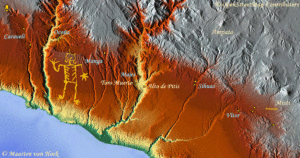
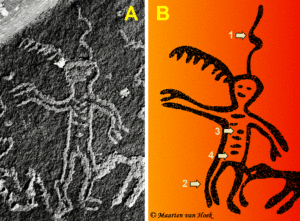

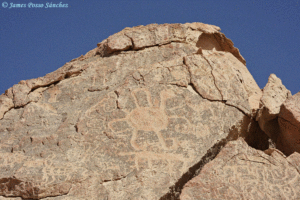
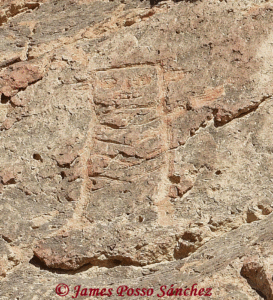
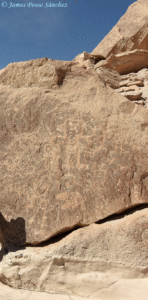
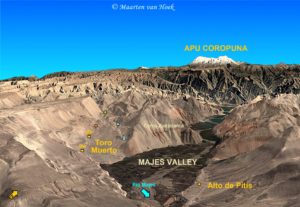
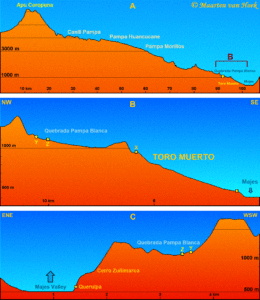
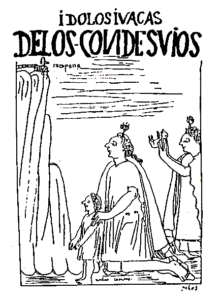
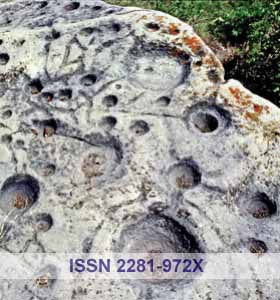













Leave a Reply